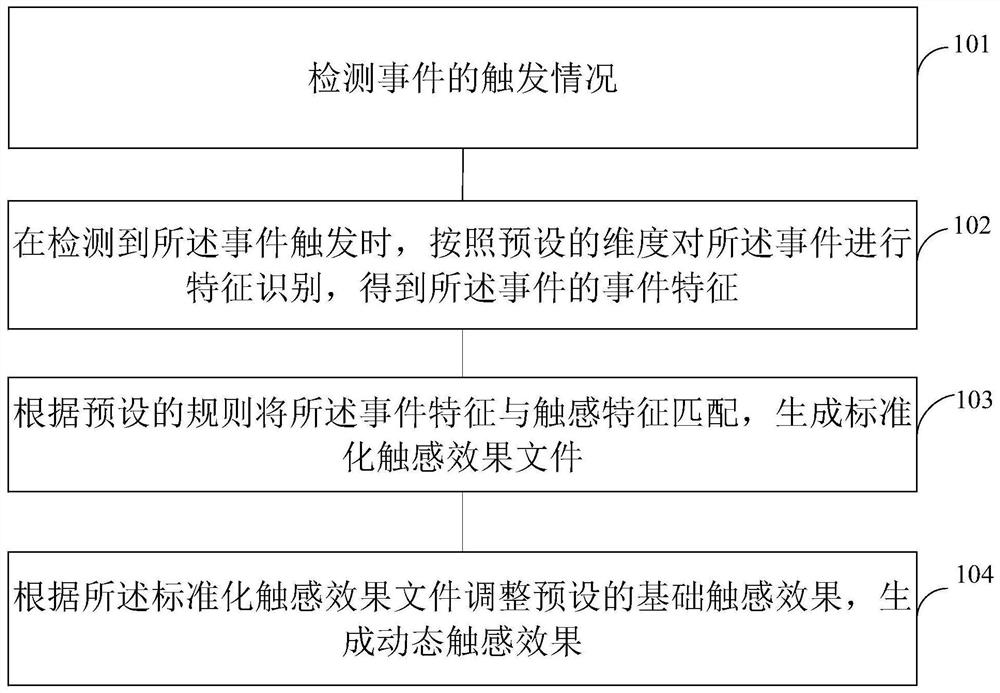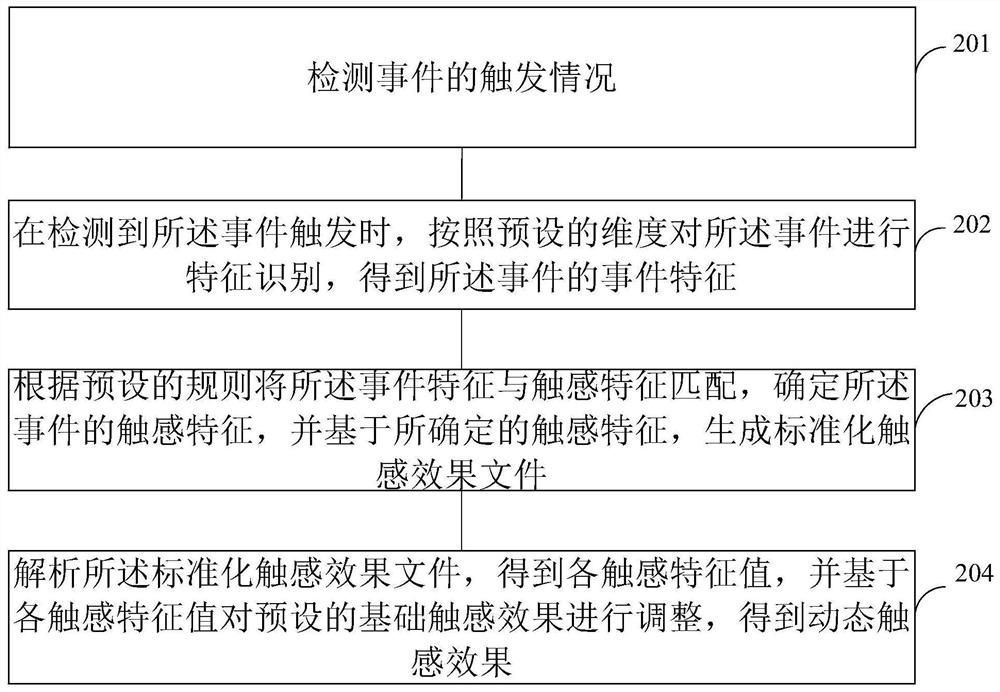Dynamic touch effect generation method and device, equipment and storage medium
A tactile effect and tactile technology, applied in the information field, can solve problems such as limited memory space, poor customer experience of electronic products, unfavorable promotion of electronic products, etc., to reduce false triggers, avoid non-tactile events, and improve user experience.
- Summary
- Abstract
- Description
- Claims
- Application Information
AI Technical Summary
Problems solved by technology
Method used
Image
Examples
no. 1 example
[0029] This embodiment shows a method for generating a dynamic haptic effect. In this method, the method for generating a dynamic haptic effect can be implemented based on a terminal device without additionally storing the haptic effect, and corresponding different dynamic haptic effects are generated according to different events, improving user experience.
[0030] refer to figure 1 , the generation method of the dynamic haptic effect includes:
[0031] Step 101, detecting the triggering of the event;
[0032] In this embodiment, the terminal device has a networking function, including but not limited to mobile terminals such as mobile phones, smart wearable devices, and tablet computers, and may also be fixed terminals such as smart TVs and desktop computers. The terminal device is configured with a tactile device, and the tactile device can detect the triggering of an event and control various tactile experiences. The operating system of the terminal device in this embo...
no. 2 example
[0073] This embodiment shows a method for generating a dynamic haptic effect of a haptic device, see figure 2 , the generation method of the dynamic haptic effect includes:
[0074] Step 201, detecting the triggering of the event;
[0075] In this embodiment, the haptic device includes an event monitor, an event classifier, a basic haptic effect storage and a data processor connected in sequence, wherein the event classifier is also connected to the data processor. The event classifier is used to classify events and identify characteristic parameters of events through sound recognition, image recognition, and event monitoring open interfaces. The event feature is sent to the basic haptic effect storage to retrieve the basic haptic effect, and at the same time, the characteristic parameters are sent to the data processor to realize dynamic haptic effect generation.
[0076] In this step, events include but are not limited to system events and in-app events. The event monito...
no. 3 example
[0106] see Image 6 , Image 6 A device for generating a dynamic haptic effect is shown, the device comprising:
[0107] A detection unit 10, configured to detect the triggering of an event;
[0108] The feature recognition unit 20 is configured to, when the event trigger is detected, perform feature recognition on the event according to a preset dimension to obtain event features of the event;
[0109] A matching generating unit 30, configured to match the event feature with the haptic feature according to a preset rule to generate a standardized haptic effect file;
[0110] The adjustment generating unit 40 is configured to adjust a preset basic haptic effect according to the standardized haptic effect file to generate a dynamic haptic effect.
[0111] It should be noted that, for the relevant content of the above detection unit 10, feature recognition unit 20, matching generation unit 30 and adjustment generation unit 40, please refer to figure 1 and Figure 5 The cont...
PUM
 Login to View More
Login to View More Abstract
Description
Claims
Application Information
 Login to View More
Login to View More - Generate Ideas
- Intellectual Property
- Life Sciences
- Materials
- Tech Scout
- Unparalleled Data Quality
- Higher Quality Content
- 60% Fewer Hallucinations
Browse by: Latest US Patents, China's latest patents, Technical Efficacy Thesaurus, Application Domain, Technology Topic, Popular Technical Reports.
© 2025 PatSnap. All rights reserved.Legal|Privacy policy|Modern Slavery Act Transparency Statement|Sitemap|About US| Contact US: help@patsnap.com



